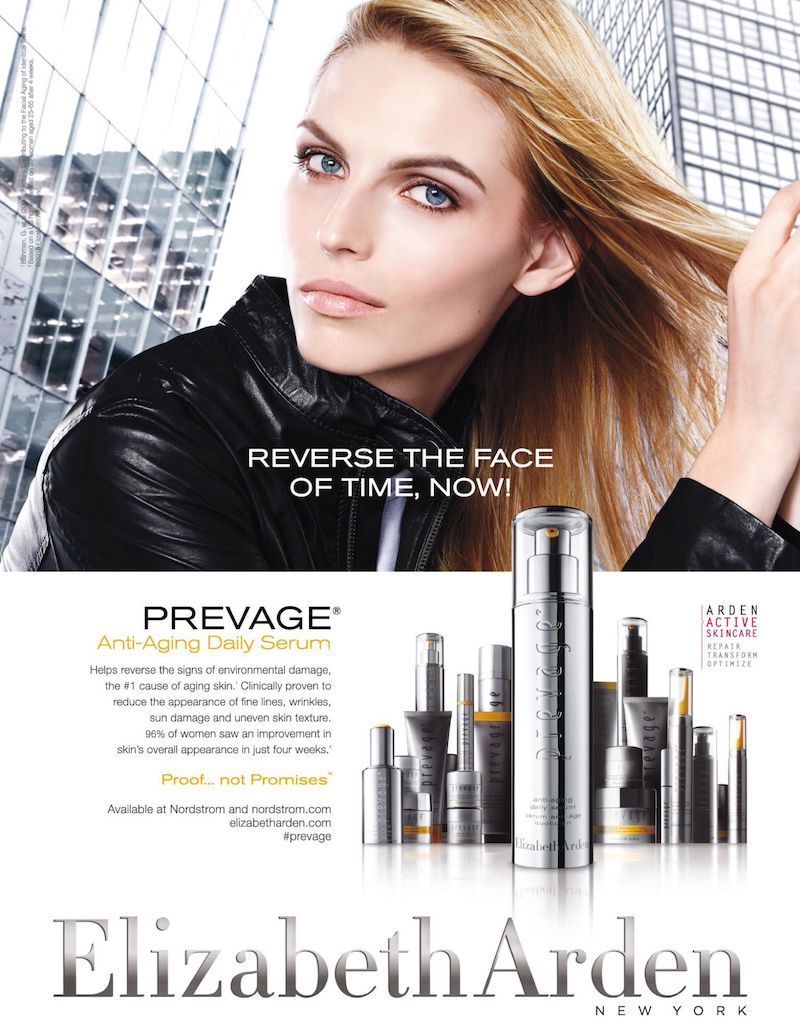Anti-aging advertisements are getting old

Older women have never before been so positively represented in media the way they are today. Supreme Court Justice Ruth Bader Ginsburg has become a veritable social media phenomenon. Helen Mirren is in her 70s but still lauded as a sex symbol. And in 2017, Allure magazine announced that it will no longer use the term “anti-aging,” marking a significant awareness of ageism in the mainstream media.
Given this visibility, it would seem that women might start to embrace aging. But, in reality, the exact opposite seems to be happening: According to a study done by Orbis Research, the global anti-aging skincare market is estimated to reach $331.41 billion by 2021. Anecdotal observations back this up. Who can flip through a magazine without seeing countless advertisements for a multitude of skincare brands with anti-aging products proclaiming they will clear away wrinkles, dark spots, and other “signs of aging”? As an 18-year-old, erasing wrinkles isn’t on my list of priorities, but I have noticed it’s high on my mother’s, who, in her mid-50s, regularly spends almost $100 on Estée Lauder “anti-aging” serum.
So why do women buy into anti-aging promises that seek to stop life’s most natural process? The answer lies within the ingrained ageist and gender stereotypes that are woven deep in society that negatively affect women’s self-perception, creating the belief that they need to buy these anti-aging products.
Despite these newer examples of media representation of age diversity, our society still generally associates the image of an “aging woman” with a stereotypical elderly grandmother, complete with features like wrinkles, gray hair, and frailty. Sally Brown, who teaches a class called “Aging With Gusto” as part of the Vital Aging Network, emphasizes that “from childhood on, Americans receive messages that old age means ‘you’re unhealthy, your mind is shot, you’re boring, you’re depressed and sad and lonely.’” These messages can still be found everywhere in daily life: from passing remarks of “you look great for your age!,” anti-aging products that advertise to “turn back the clock,” or stereotypical characters in popular TV shows like Hans Moleman from the Simpsons.
These ageist stereotypes are not just offensive but also impact real lives. Take, for example, how the Care Quality Commission found multiple hospitals leaving elderly patients severely dehydrated and malnourished or how 64 percent of workers say they have seen or experienced ageism in the workplace.
While ageism affects both women and men, women face even more challenges when considering the societal perception of the link between looking young and looking beautiful. Many anti-aging advertisements are targeted toward women, implying that the natural signs of aging are undesirable characteristics specifically for women. This double standard of aging has also been noted by experts, like sociology professor Laurie Russell Hatch, who explains that “the social worth of women has been linked more closely with their physical appearance compared to the situation for men.”
Despite a relative increase in age diversity in mainstream media and Hollywood, both industries still often reinforce ageist stereotypes — especially for older women. In 2015, Academy Award-winning actress Maggie Gyllenhaal opened up about ageism, revealing that she was rejected from a role because she “was too old to play the lover of a man who was 55” when she was only 37 years old. Furthermore, a study completed by Time magazine found that actresses receive the most movie roles at age 30, at which point the number of roles they’re offered starts to decline, while male actors continue to receive an increasing number of movie roles until the age of 46. This lack of older women in the spotlight sends a message: In order for women to stay socially relevant, they must look young.
This media representation of the professional and personal consequences of aging explains why women still go to great lengths — like dying their hair or getting Botox — to mask any signs of aging. But by doing so, women spend an extraordinary amount of time and money on their appearance — time and money they could’ve spent on far more substantive endeavors. What’s more, by 2030, the number of people over 65 years old will surpass the number of people under the age of 18, creating a society in which older people are the majority.
We need to seriously reconsider the consequences of harboring ageism as our society ages. It’s time for older women to step out from the shadows of society and into the spotlight to celebrate their years of life and experience and turn our society’s simplistic image of what it means to be beautiful for older women on its head.
More articles by Category: Body image and body standards, Media
More articles by Tag: Advertising, Sexism


























